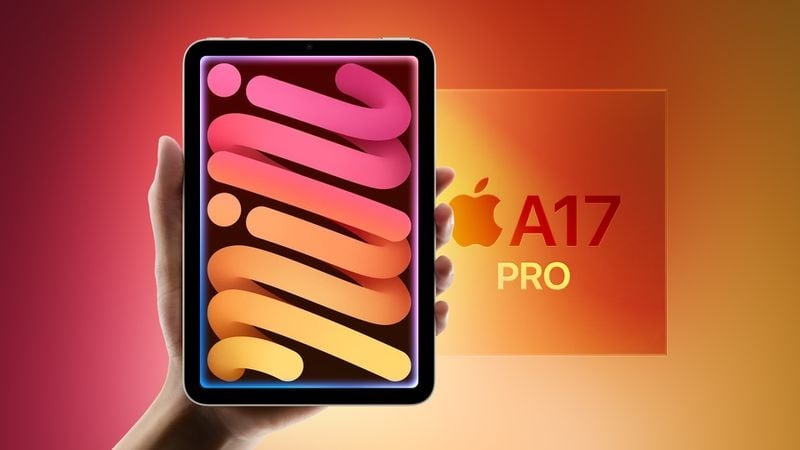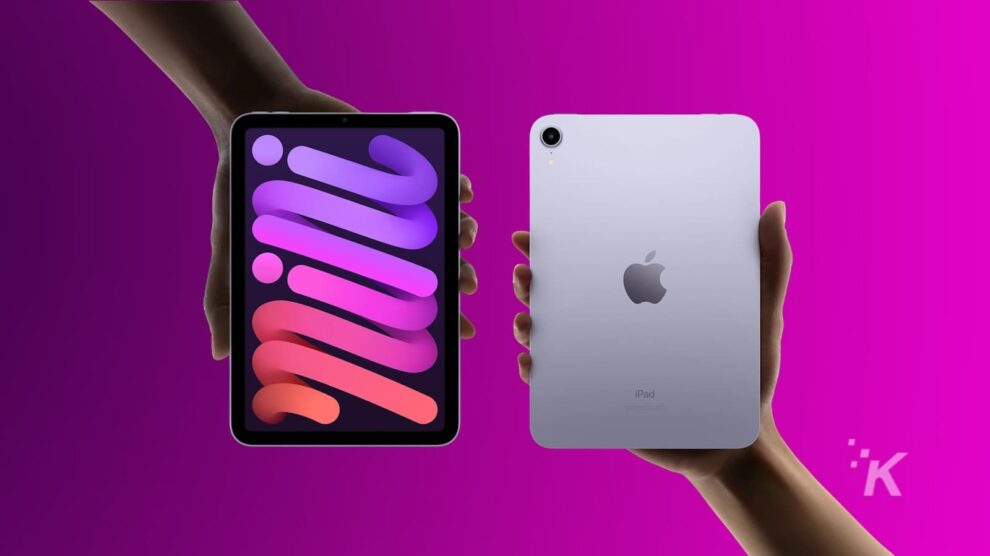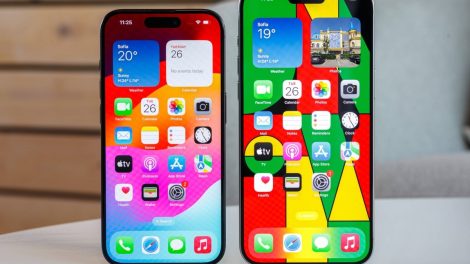
Key Specifications Unveiled
A17 Pro Chip: A Familiar yet Distinct Heart
- Chip Model: A17 Pro, first introduced in the iPhone 15 Pro series
- CPU Cores: 6 cores, clocked at 3.78 GHz
- GPU Cores: 5 cores (one less than the iPhone 15 Pro version)
- Memory: 8GB RAM confirmed
The “Binned” A17 Pro
The presence of a 5-core GPU instead of the 6-core version found in the iPhone 15 Pro suggests that Apple is using a “binned” version of the A17 Pro chip in the iPad mini 7. Binning is a common practice in semiconductor manufacturing where chips that don’t meet the full specifications (in this case, a fully functional 6-core GPU) are repurposed for use in other devices. This approach allows Apple to maintain high yields in chip production while offering a powerful, yet slightly less capable, version of the A17 Pro in the iPad mini.
Geekbench Performance Analysis
Raw Scores
- Single-Core Performance: 2,710 to 2,840
- Multi-Core Performance: 6,274 to 6,982
Comparative Analysis
| Device | Chip | GPU Cores | Memory | Single-Core Score | Multi-Core Score | Metal GPU Score |
|---|---|---|---|---|---|---|
| iPad mini 6 (2021) | A15 Bionic | 5 | 4GB | 2,121 | 5,367 | 19,486 |
| iPad mini 7 (2024) | A17 Pro | 5 | 8GB | 2,840 | 6,982 | 25,895 |
| iPhone 15 Pro (2023) | A17 Pro | 6 | 8GB | 2,888 | 7,169 | 27,144 |
Performance Gains
- vs. iPad mini 6: Approximately 34% improvement in single-core and 30% in multi-core performance
- vs. iPhone 15 Pro: Slightly lower performance, with about 1.7% decrease in single-core and 2.6% in multi-core scores
Memory Upgrade: Doubling the RAM
The Geekbench results confirm that the iPad mini 7 comes with 8GB of RAM, doubling the 4GB found in its predecessor. This significant memory increase has several implications:
- Improved Multitasking: More RAM allows for smoother switching between apps and better performance when running multiple apps simultaneously.
- Enhanced App Performance: Memory-intensive applications, such as complex games or professional-grade software, can run more efficiently.
- Future-Proofing: The increased RAM provides headroom for future iPadOS updates and more demanding applications.
Implications for Users
Everyday Usage
For typical iPad mini users, the performance improvements translate to:
- Faster App Launches: Reduced loading times for applications and games.
- Smoother UI Interactions: More responsive user interface, especially when multitasking.
- Improved Web Browsing: Faster page loads and smoother scrolling, especially on content-heavy websites.
Professional and Creative Applications
The A17 Pro chip and increased RAM open new possibilities for professional use:
- Photo and Video Editing: Capability to handle more complex editing tasks on-the-go.
- 3D Modeling and AR: Enhanced performance for augmented reality applications and 3D modeling software.
- Scientific and Data Analysis: Improved capabilities for running complex calculations and data processing tasks.
Gaming Experience
Gamers can expect:
- Higher Frame Rates: Smoother gameplay in graphically intensive games.
- Improved Graphics Quality: Ability to run games at higher visual settings.
- Faster Load Times: Reduced waiting times when launching games and loading levels.
The A17 Pro: A Closer Look
Architecture and Manufacturing Process
The A17 Pro chip in the iPad mini 7 is built on TSMC’s 3nm process, offering several advantages:
- Improved Energy Efficiency: Potentially longer battery life compared to previous generations.
- Enhanced Thermal Management: Better heat dissipation, allowing for sustained performance under load.
- Increased Transistor Density: Enabling more powerful features in the same chip footprint.
The 5-Core GPU: Implications and Trade-offs
While the 5-core GPU represents a slight reduction compared to the iPhone 15 Pro’s 6-core version, its impact on real-world performance may be minimal for most users:
- Balanced Performance: The 5-core GPU likely offers a good balance between performance and power consumption for the iPad mini’s form factor.
- Thermal Considerations: Fewer GPU cores may help manage heat generation in the compact iPad mini chassis.
- Target Use Cases: The GPU performance is still significantly improved over the previous generation, meeting the needs of most iPad mini users.
Positioning in Apple’s Lineup
Comparison with Other iPads
The iPad mini 7’s performance positions it as a powerful option in Apple’s tablet lineup:
- vs. Base iPad: Significantly more powerful, offering pro-level performance in a compact form factor.
- vs. iPad Air: Likely to offer similar or slightly better performance, depending on the Air’s next update.
- vs. iPad Pro: While not matching the M-series chips in the Pro lineup, it offers pro-level performance for its size class.
Market Positioning
The iPad mini 7’s performance characteristics suggest it’s targeting several key markets:
- Mobile Professionals: Offering powerful computing in an ultra-portable form factor.
- Creative Professionals: Providing a capable platform for on-the-go creative work.
- Tech Enthusiasts: Appealing to those who want cutting-edge technology in a compact device.
- Specialized Industries: Suitable for fields like aviation, healthcare, and field services where a compact, powerful device is beneficial.
Future Implications and Trends
For the iPad mini Line
- Performance Expectations: Sets a new baseline for future iPad mini performance upgrades.
- Feature Parity: Closer alignment with iPhone Pro features may continue in future generations.
- Use Case Expansion: Increased power may lead to new professional and creative applications for the iPad mini.
For Apple’s Chip Strategy
- Chip Binning: May indicate a broader strategy of using binned chips across different product lines.
- Performance Tiering: Reflects Apple’s approach to differentiating performance across its product range.
- Sustainability: Efficient use of chip yields could contribute to more sustainable manufacturing practices.
Conclusion
The Geekbench results for the seventh-generation iPad mini reveal a device that significantly outperforms its predecessor while offering performance close to that of the iPhone 15 Pro. The combination of the A17 Pro chip, albeit with a 5-core GPU, and 8GB of RAM positions the new iPad mini as a formidable compact tablet capable of handling a wide range of tasks from everyday computing to more demanding professional applications.
While the slight reduction in GPU cores compared to the iPhone 15 Pro version of the A17 chip might raise eyebrows, it’s likely a strategic decision balancing performance, power consumption, and thermal management in the iPad mini’s compact form factor. For the vast majority of users, this difference will be negligible in real-world usage.
The substantial increase in RAM from 4GB to 8GB is perhaps one of the most significant upgrades, promising improved multitasking capabilities and overall system responsiveness. This positions the iPad mini 7 as a more viable option for users who require a powerful yet highly portable device for professional or creative work.
As Apple continues to push the boundaries of performance in compact devices, the iPad mini 7 stands as a testament to the company’s chip design prowess and its ability to deliver significant generational improvements. For users seeking a powerful, versatile, and ultra-portable tablet, the new iPad mini appears to deliver on all fronts, setting a new standard in the compact tablet market.










Add Comment